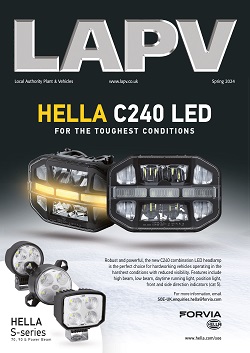Research by TRL enables groundbreaking changes to European safety regulations to future proof the car industry, placing Europe in the lead on the road towards automated vehicles.
Members of the European Parliament's Committee on Internal Market and Consumer Protection (IMCO) have approved a range of new vehicle safety standards developed by TRL, marking a historic moment along the regulatory journey for vehicle automation.
TRL has been working on the European Commission's behalf since 2014 to assess the feasibility of these new regulatory safety measures, bringing together the car manufacturing industry, NGOs, governments and safety organisations at every step of the project. The intention was to evaluate all measures proposed in a truly authentic and transparent approach to reach a consensus on how the individual measures will work to protect road users and also how they will interact as a system.
These innovative new vehicle safety standards are the first of their kind, anywhere in the world, placing the EU at the head of the regulatory safety race for a connected and automated vehicle (CAV) future while delivering outstanding safety benefits to European society.
'I'm enormously proud of the work completed by TRL in not only developing these safety standards and undertaking the Impact Assessment, but also in the phenomenal achievement of bringing this to the European Commission to now take to an EU Parliamentary vote,' said Richard Cuerden, Head of TRL's Academy.
'We are pushing very hard for relevant and practical standards to be introduced for our vehicles, not only in the UK but across Europe. This new safety legislation is the first of its kind and lays the groundwork for what is going to come next as vehicles transition from human to automated systems. As an organisation, TRL is helping to write the rulebook for this journey. I would like to thank the European Commission, Róża Thun (MEP) and IMCO, and all of the stakeholders involved in bringing these standards to this advanced position,' explained Cuerden.
In supporting the development of the new regulatory framework, TRL rigorously analysed a wide range of active and passive safety measures, the result of which incorporates 17 measures that have been designed to work in harmony with each other. The entire process was conducted in an open and honest forum, including a peer review of all literature around each safety measure, quality assessments and workshops whereby members from every group were invited to provide their feedback for consideration.
The final consequential chain of active and passive safety measures will see the development of cutting-edge vehicles in the EU automotive industry with truly advanced safety measures that will save thousands of lives and prevent serious injuries in the event of a collision.
'The advanced safety measures for new vehicles will provide state of the art protection to all road users. Intelligent Speed Assistance and Drowsiness and Distraction Recognition will support drivers in their ongoing tasks; Autonomous Emergency Braking and Emergency Lane Keeping will intervene in the most critical situations to avoid a crash; and improved crash tests will ensure that injuries of occupants, as well as pedestrians and cyclists,
are minimised in the remaining collisions,' explained Matthias Seidl, Senior Researcher, Vehicle Safety & Regulation at TRL.
The measures also include blind spot monitoring systems and a new direct vision standard for lorries and buses to enable drivers to have a better view of other road users around their vehicles.
TRL's research is a sterling example of a UK organisation affecting positive change at the heart of Europe, crucially combining the delivery of significant societal benefits with helping the EU industry to remain competitive in regards to the challenges of developing automated vehicles, due to it including measures to address Driver Distraction, Speeding and Vulnerable Road User protection. TRL has subsequently been awarded a contract from the European Commission to support the development of the detailed technical rules for the new systems, including the world's first automated regulations for cars.

